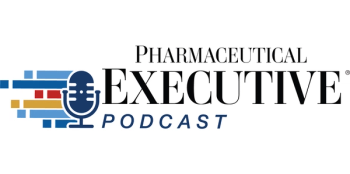
Overcoming HCP Engagement Fatigue with Data-Driven Insights
With a single source of data united under a single privacy policy, pharma marketers are equipped to plan, engage, measure, and optimize a targeted digital marketing model.
Prior to the spring of 2020, pharmaceutical companies and healthcare professionals engaged primarily through in-person meetings, whether in a physician’s office or at a medical meeting. Like so much in healthcare, this practice changed abruptly in the early days of the pandemic, and engagement pivoted overnight to a hybrid model of remote meetings and digital engagement.
Engagement strategies are shifting again and it’s putting pharma marketing teams in a tough spot. Over the past two and a half years, many physicians have come to appreciate digital engagement, much as most people embraced online shopping or restaurant take-out ordering during the pandemic. At the same time, the sheer volume of engagements made possible by digital campaigns can be overwhelming, limiting the likelihood that physicians will engage with the content that’s presented to them.
Pharmaceutical marketing teams must manage this strategic shift carefully. To avoid the “digital fatigue” of too many emails or ads that aren’t relevant, they need granular data about the physicians they’re targeting, coupled with robust analytics to help determine what messages to send and how to follow up—along with a consent model designed to meet the needs of both today’s and tomorrow’s legal and regulatory landscape.
With digital engagement, there can be too much of a good thing
With travel budgets returning and conferences reemerging, it’s clear that the in-person meeting hasn’t gone away forever. However, pharmaceutical companies have found value in expanding the use of digital outreach above pre-pandemic levels.
Email and targeted advertising campaigns can reach significantly larger audiences across wider geographic areas than even the largest field-based sales teams. In addition, responding to digital engagements takes less time for physicians than sitting in a meeting, allowing them to spend more time seeing patients. Finally, digital engagement enables pharma companies to increase the number of touchpoints they have with physicians, which can help to build an ongoing relationship in the long run.
The challenge is finding the right balance between in-person and digital engagements—after all, there’s still value in meeting someone face-to-face in terms of relationship building. Face-to-face communication is more effective than written or audio-only conversations, as humans are apt nonverbal communicators.
Seeing someone’s body language and expressions face-to-face builds trust and reduces misunderstanding. More importantly, there’s a need to find the right balance in terms of how the healthcare provider (HCP) wants to be engaged and bringing them the best content in the most effective medium (ads, emails etc.).
Research shows that more isn’t better. In 2020, pharma companies sent eight times as many emails to healthcare professionals as they did in 2019, according to an analysis of nearly 8 million emails sent as part of 15 email campaigns. The good news is that this uptick didn’t result in higher unsubscribe rates. The bad news: it didn’t increase engagement rates, either.
The legal and technical landscape isn’t going to make things easier for pharma marketers. Starting in 2023, they were subject to stricter data privacy laws in California, while more than a dozen other states passed or voted similar legislation during the year. The mail privacy protection that Apple introduced with iOS 15, coupled with Google’s planned phase-out of third-party cookies in Chrome (now slated for 2024), add further obstacles to targeted digital marketing efforts.
Ultimately, physician engagement succeeds when they are receptive to and able to act upon the information they receive. This requires personalization, which is best achieved when marketing teams know their audience intimately and have the tools to send them the right message in the right format at the right time.
Having the right data drives connected intelligence
The first step to highly personalized physician engagement is obtaining granular data about the physicians in a target audience. While general consumer marketing strategies can rely on projected or look-alike audience demographics, this is unfortunately too general for targeted physician engagement.
Marketing teams are likely accustomed to gathering many types of physician-level data: demographic information, medical specialties, most common diagnoses and procedures, facility affiliations, and so on. Claims data can also provide greater insight into treatment, referral, and prescription patterns. Knowing email addresses helps, of course, provided they’re both accurate and up to date.
This information is certainly valuable, but it’s just a starting point for effective digital engagement. To reach physicians with targeted ads on social media, it’s important to know where they are active users, what relationships they have, and how frequently they engage. To further meet physicians where they are, it also helps to have information about online activity, such as streaming services. Finally, gathering information about where physicians may have published research and how often it’s mentioned in the news provides additional depth and opportunities for personalization.
All of this information can be funneled to a customer data platform (CDP), which allows businesses to collate customer data from any source, regardless of format or channel. A well-built CDP possesses automation capabilities, which provide data-driven insights on how to best engage individual customers based on historic preferences and digital behaviors.
This granular data set represents a form of connected intelligence, with traditionally disparate pieces of data united in a single data set. This gives marketing teams a complete picture of physicians’ identities and their digital behavior. Instead of using look-alike modeling or probabilistic matching—neither of which have a good track record of identifying the right targets—pharma companies have the power to create one-to-one maps of healthcare professionals, which map out the exact digital behavior and preferences of a single HCP.
Not only does this approach to HCP engagement enable more accurate and advanced targeting, it also provides a source of behavioral insight to determine the next types of engagements, from the type of message to the channel to the time of day that it’s delivered. This application of advanced analytics brings further personalization—and value—to an ongoing engagement, giving physicians the information they need without the feeling that they’re being spammed.
Giving pharma marketers the insights they need
Unfortunately, physician-level data does little good if marketers can’t use it. Data gathered from disparate data sets require harmonization to link data about one physician from one data set to another. What’s more, third-party data sets (data purchased as a set from external sources) are also falling out of favor due to technical and regulatory trends pushing for greater consumer data privacy protections. Finally, organizations need to ensure that they’re reaching out to physicians via a channel on which they’ve opted into receiving communications.
Even the most sophisticated pharma marketing teams are likely to struggle to do this work on their own. Aggregating externally sourced third-party data sets is expensive. Harmonizing them into a single repository to create a universal ID for each physician is often a time-consuming, manual process. Harmonization is all the more complicated if each data source has a different privacy policy in place, as it forces marketers to apply rules to individual records, not the entire dataset, or choose the lowest common denominator and miss out on certain elements of physician-level engagement.
A well-designed omnichannel digital engagement strategy starts with a database first-party information gathered from the organization’s historic engagement activities. With a single source of data united under a single privacy policy, pharma marketers are equipped to plan, engage, measure, and optimize a targeted digital marketing model.
Marketing teams can couple this connected intelligence with advanced analytics to drive next-best action recommendations and create a well-rounded engagement strategy. By leveraging outreach that can adapt to the best way to reach an individual physician, coupled with a well-built data platform and insights engine, marketing teams can provide the right number of digital engagements to complement in-person meetings and build stronger relationships with the physicians they serve. Ultimately, this will lead to more successful engagements and more opportunities to bring the best new medicines available to patients faster.
About the Author
Michael Lynch is Senior Director of Product Management and IQVIA’s offering lead for Information Management. He has 20+ years of global experience solving data engineering challenges across many industries including life sciences, healthcare, tech, government, and consulting services. At IQVIA, Michael heads up a highly talented team of engineers and product managers focused on empowering organizations to become a data driven culture. Leveraging AI/ML and the best tech in the industry, the team delivers products that dramatically accelerate the data-to-insights journey through automation and human centered design principles. When not working Michael enjoys endurance sports, travel, chess, classical music, and spending time with family.
Newsletter
Lead with insight with the Pharmaceutical Executive newsletter, featuring strategic analysis, leadership trends, and market intelligence for biopharma decision-makers.





